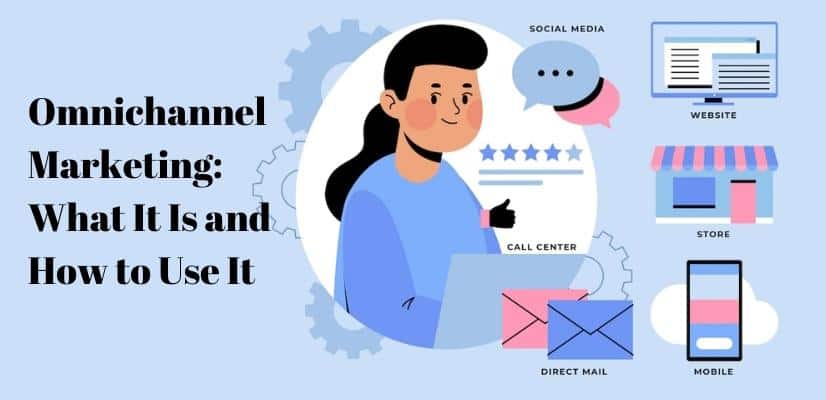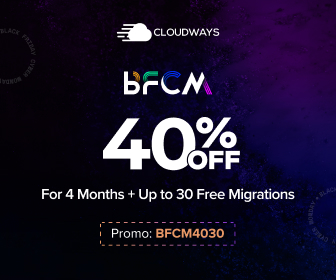How would you describe omnichannel marketing? Is it really possible to combine various channels to create a single customer journey? The last decade has seen marketers using new technologies such as social media, mobile phones, email and online chat to reach customers.
But at some point, these technologies became indispensable to businesses looking to engage their audiences. This shift from offline to omni-channel marketing was expected due to the increased connectivity between consumers and brands through multiple platforms.
Today, companies are striving to use every tool at their disposal to ensure they create better experiences for customers, whether those tools involve web, mobile or other mediums. As a result, marketers now face challenges integrating various channels into one customer experience, especially when different departments are responsible for each part of the journey.
What is Omnichannel Marketing?
Omnichannel marketing is a multichannel retail channel approach where customers interact with all channels simultaneously throughout the customer lifecycle.
This includes a single omnichannel perspective of a business across multiple touch points such as web, mobile app, email, social media, physical store, etc., instead of focusing only on one channel. As these channels continue to evolve and change, it’s important for marketers to adapt and remain competitive. The goal of omnichannel is to provide a seamless customer experience from start to finish.
An example of omnichannel marketing would be ordering something from Amazon using a mobile app while browsing for other items at the same store. The same customer could visit several stores in one trip and use different channels to place orders. This approach has become increasingly important, as consumers are now shopping and buying goods/services from anywhere, anytime and via any device.
What's the Difference Between Multichannel vs Omnichannel?
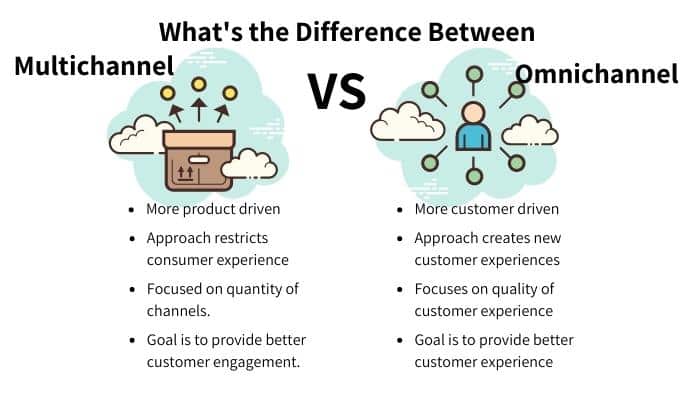
1. Omnichannel is more customer driven whereas multichannel is more product driven.
2. An omnichannel approach creates new customer experiences for consumers through multiple channels; whereas a multichannel approach restricts consumer experience to the potential of individual channels.
3. Omnichannel focuses on quality of customer experience whereas multichannel is focused on quantity of channels.
4. Omnichannel goal is to provide better customer experience on the other hand multichannel goal is to provide better customer engagement.
What is Omnichannel Attribution?
Omnichannel attribution refers to tracking what happens on a customer's journey through an organization from their first interaction with a brand until they actually become a loyal customer or convert into a purchase.
It helps marketers understand how consumer behavior changes throughout the customer journey from awareness through purchase to repeat purchases. It measures the percentage of customers who bought something on one channel but then also made a purchase via another channel.
It is an evaluation method used for understanding consumer behavior based on how they shop online and in physical stores. Online purchases are tracked through data analytics to understand what consumers buy when shopping.
Steps to Develop a Successful Omnichannel Marketing Strategy
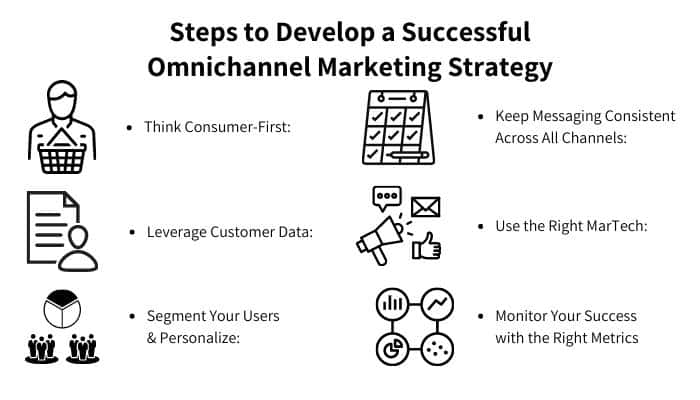
1. Think Consumer-First:
To be successful with your omnichannel marketing strategy, you must consider consumer behavior first. Consumers are increasingly turning to online channels to make their buying decisions, so understanding how they behave can help improve conversions and drive sales. Understanding customer needs and wants helps brands better connect with consumers at critical junctures across the purchasing journey.
2. Leverage Customer Data:
If you have collected customer data, such as demographic information or browsing history, then you can leverage this data with retargeting campaigns. This allows you to target more specific audiences, thereby increasing conversion rates.
If a brand knows that a customer has visited a website about buying a new car, the brand could send out an email or ad focused specifically around this topic. This type of targeting allows brands to be more efficient with marketing dollars while still reaching consumers who are likely interested in the company’s products.
3. Segment Your Users & Personalize:
If you are trying to bring more people to your website or blog, then one of the best ways to get their attention is by segmenting them so they can be targeted with relevant information and offers. By creating unique segments based on factors like age, gender, location, interests, education level, buying habits, etc., you can personalize your marketing efforts while also providing each person with specific messages about products and services that match their needs.
Segmentation allows us to divide our audience by buying attributes. For example, if you run a website about football, you could group consumers who live in a certain country together, those who are interested in American Football together, and those interested in Australian Football together.
4. Keep Messaging Consistent Across All Channels:
Make sure to keep messaging consistent across every channel—it may seem like a lot at first, but if you stick with it, you'll see results. If you send out one message to your target audience through multiple channels, they are more likely to read and respond to it if you keep messaging them consistently across all platforms. This includes social media, email, text messages, and more.
5. Use the Right MarTech:
Marketing technology, or “MarTech”, can be a powerful tool to increase conversion rates. With this type of software, companies can track customer interactions with their company website and identify where they lose customers. This helps them optimize their marketing efforts, whether that means adjusting messaging or adding more calls-to-action.
For example, if you are running a promotion but only one out of 10 people click through to see details about the offer, then you know you need to change your message or add another call-to-action.
6. Monitor Your Success with the Right Metrics
A lot of people get confused by “metrics.” They think they are all about data collection and processing. But there’s more to metrics than just collecting numbers.
The real purpose behind them is understanding how the performance of your business compares to the rest of the market, and then taking action based on this information.
Examples of Omnichannel Marketing
Some of omnichannel example are the following:-
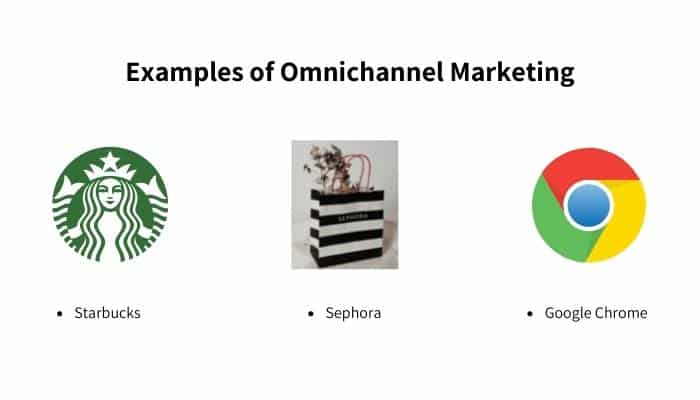
1. Starbucks: In 2013, Starbucks launched its mobile app for Android devices in China. Within weeks, over 8 million people downloaded the app, fueling growth at stores across the country. Starbucks' CEO Howard Schultz said that the goal was to "make sure that every single person who walks into our stores feels like they belong" to the coffee giant.
2. Sephora: Omnichannel marketing involves integrating different channels such as online, mobile apps, social media, etc., into one experience. In the case of Sephora, their customer service team is able to contact customers through social media platforms like Twitter or Facebook, on their website, or via phone without having to pick up a phone themselves. It makes shopping at Sephora seamless for both the consumer as well as for the company itself.
3. Google Chrome: Google Chrome offers its users both desktop and mobile versions of the browser so they can access their content from any device. It also features built-in ad blocking technology that removes ads before showing them on a web page. This means people don't get annoyed when they are interrupted while reading a news article or watching a video online and there aren't banner ads popping up every few seconds.
Summary
Omnichannel attribution looks at tracking consumer behavior change throughout the customer journey. The purpose of omnichannel marketing is to increase revenue by providing an integrated customer experience across every channel.
For anyone interested in developing a successful omnichannel marketing strategy it starts by thinking about the consumer first. You should think about what type of products consumers want and why they choose certain brands over others.
Next collect data to develop a unique profile of a customer and then build a customer centric campaign plan.





